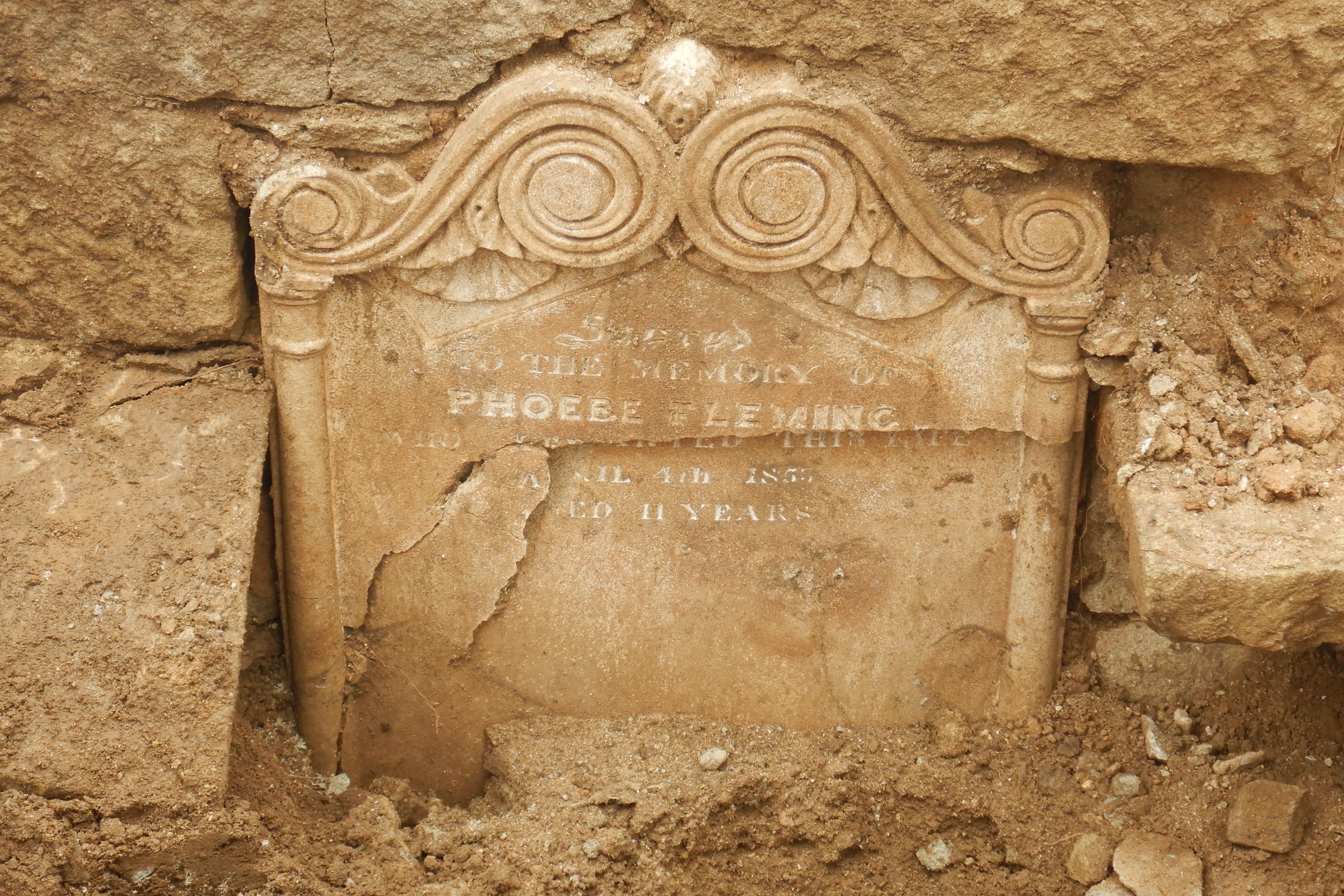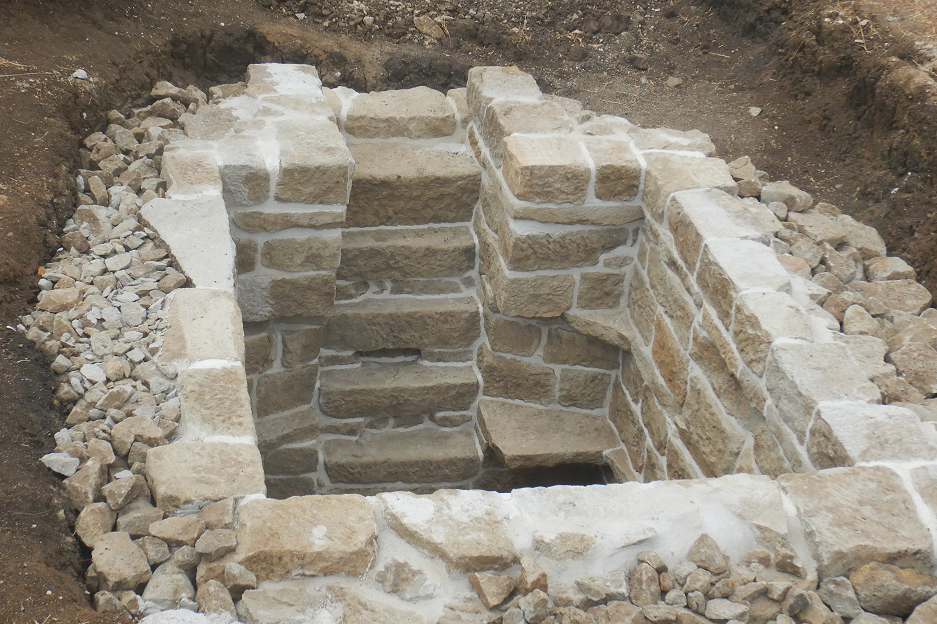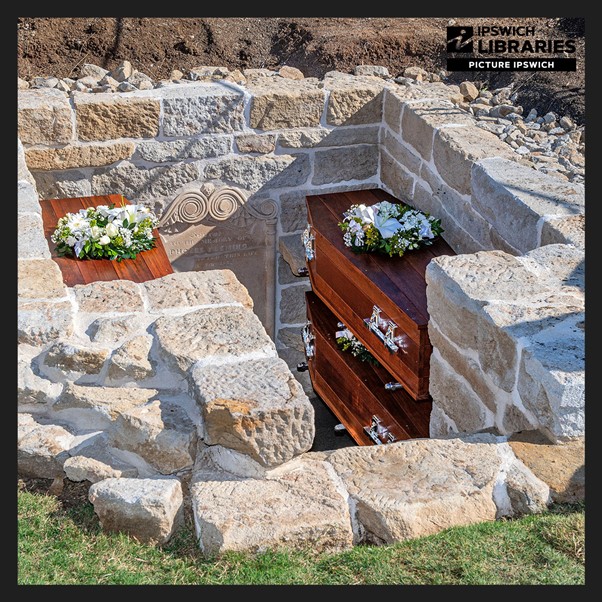During the prolonged drought in 1998 a linchpin dropped from a previously unknown underground crypt leaving a hole from which the crypt could be viewed. The linchpin in this type of construction serves to secure the curved section of roof making up the crypt. Without the linchpin the roof could collapse at any time.
The decision at the time, undoubtedly from a public safety perspective, was to use a backhoe to cave in the crypt and then fill it with soil. Crypts are very rare in Australia, particularly in public cemeteries, and represent a unique example of the funerary arts and stone masonry skills in use at the time of early history of Ipswich and Queensland.
The practice of constructing underground vaults was not common in Australia and those that were constructed were part of a European tradition of settlers and religious orders.
It is believed there are five vaults/crypts within the Ipswich General Cemetery.
In 2017, it was brought to the attention of the then Council of Ipswich of the destructive actions that had been inflicted on the Fleming Family Vault, and Council instigated a remediation program to restore the structure.
Ipswich City Council, in partnership with the University of Southern Queensland, Classical Stone Australia and L.R. Thomas Funeral Directors worked to uncover the secrets of one of the state’s first politicians, Joseph Fleming. Details of the significant find were first revealed by council in December 2017 and investigations commenced to determine if it was possible to carry out the archaeological dig safely and inexpensively and restore the site for heritage purposes. The crypt is the final resting place of Joseph Fleming, his wife Phoebe and daughter Caroline. Mr Fleming was a member of the first Queensland Parliament, representing West Moreton from 9 July 1860 until 3 November 1862 and again from 11 September 1866 until 2 July 1867.
Project Timeline
The project was delivered in six key phases:
Phase #1: Crypt Excavation

The collapsed crypt was uncovered using archaeological techniques by the University of Southern Queensland to preserve the site heritage value and to identify location data for the stone blocks to assist reconstruction.
Phase #2: Removal of Remains
This was a sensitive phase of the project and entailed the careful removal of human remains and remains of coffins. L.R. Thomas Funeral Directors and the archaeology team were responsible for this process.
Phase #3: Crypt Rebuilding

Classical Stone Australia volunteered time and expertise to the rebuilding of the crypt. The lead stonemason has experience in major heritage projects including Anzac Square in Brisbane and major cathedral works in Brisbane and Rockhampton.
Phase #4: Reinternment of Fleming Remains
The remains of Joseph, Phoebe and Caroline Fleming in new hardwood coffins were reinterred with appropriate ceremony and sensitivity.

Phase #5: Crypt Overfill
The crypt exterior was backfilled with a plaque placed to mark the location. The stairs and access point were blocked with a removable barrier and filled in to present an entrance that could be made viable with small effort.
Phase #6: Documentary Film
A documentary film was produced by the University of Southern Queensland.
A large amount of information and images are located on Picture Ipswich regarding the Fleming Crypt.